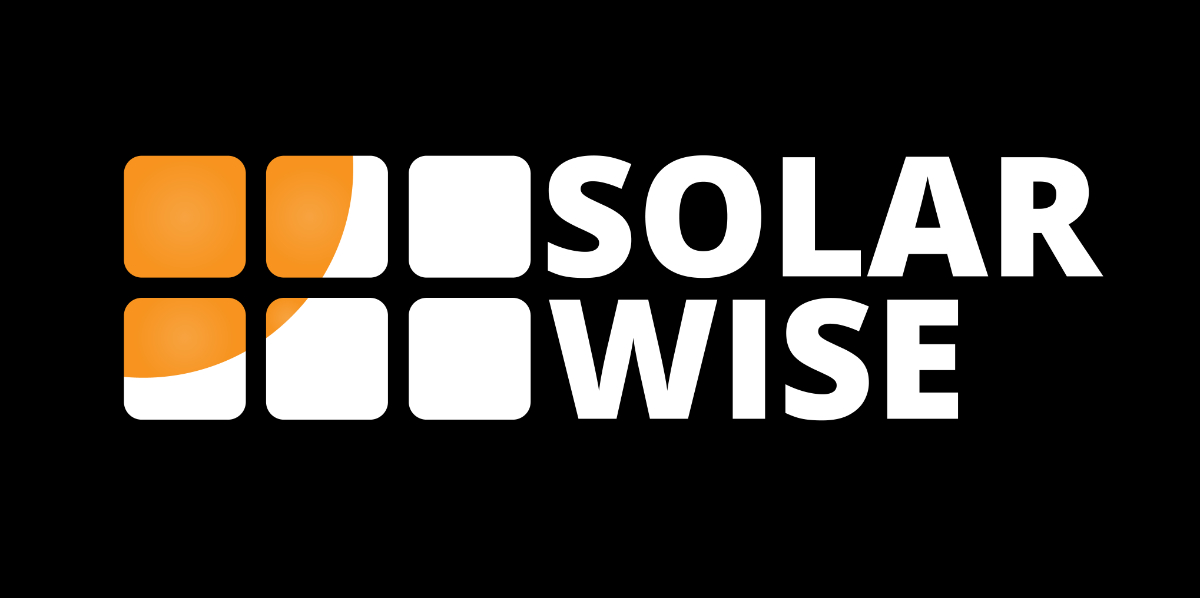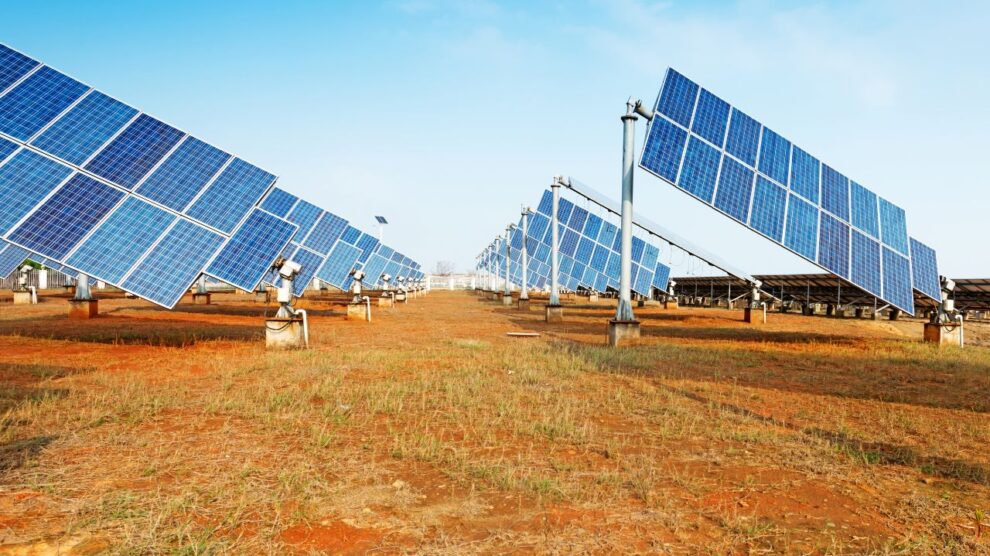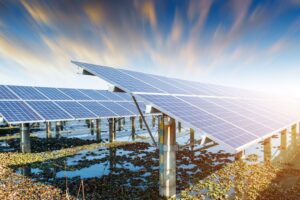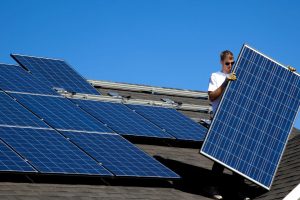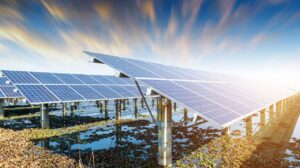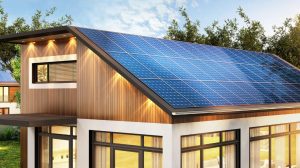Explore how sun-following solar panels are set to redefine energy efficiency and amplify the renewable power produced. As technology evolves, more homeowners and businesses gravitate towards solar energy to lessen their environmental impact and decrease energy expenditures.
Sun-tracking solar panels are crafted to shadow the sun’s course during the day, ensuring the best position to absorb sunlight. This active alignment system guarantees that these panels maintain optimal sun-facing positions, offering a superior energy yield compared to their stationary counterparts. Tracking solar panels can produce up to 25% more energy by perpetually optimizing sunlight capture. This boosts the efficacy of energy capture and can translate to significant savings on electric bills.
This piece’ll delve into these sun-tracking panels’ mechanics, advantages, and transformative potential, spotlighting a brighter, more sustainable energy horizon.
Traditional fixed solar panels vs. solar panels that track the sun
Photovoltaic cells in solar panels convert sunlight into electrical energy. When the sun’s rays strike these panels, they stimulate the electrons within the cells, generating an electrical current. You can power your home, business, or reserve this electricity for future use.
Conventional static solar panels remain in one position, set at an angle determined by the site’s geographical context. While they proficiently harness sunlight, their effectiveness is confined to the predetermined angle. This signifies that there might be moments in a day or a specific season when these panels aren’t ideally positioned relative to the sun, leading to lesser energy harvest.
Conversely, sun-tracking solar panels incorporate mechanisms enabling them to trail the sun’s trajectory as the day unfolds. By perpetually tweaking their stance, these panels ensure they intercept sunlight at its best angle, thereby maximizing the energy captured.
The standout distinction between the conventional static panels and the sun-tracking ones lies in their interaction with the sun’s motion. While the static panels have a predetermined orientation, the tracking ones continually modify their angle and direction in response to the sun’s whereabouts. Such flexibility ensures these panels remain in the sun’s favor, optimizing energy production.
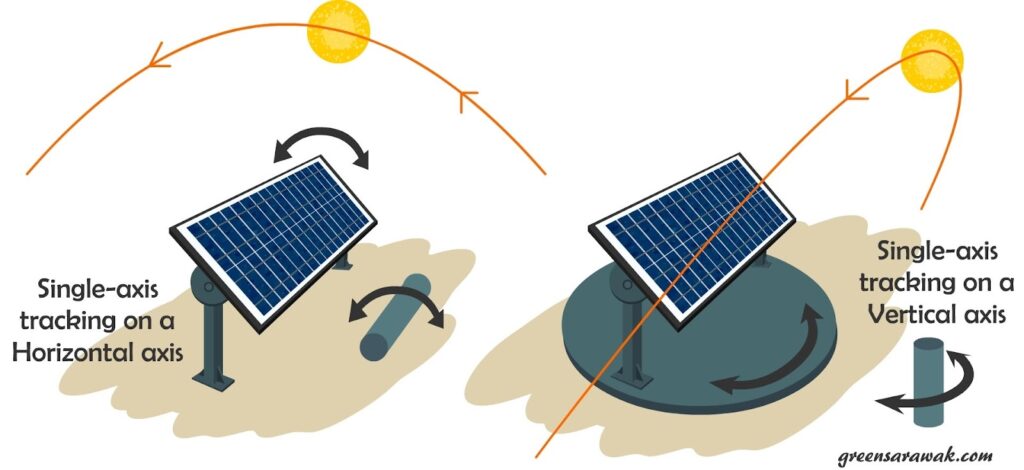
Credit: solarreviews.com
Benefits of solar panels that track the sun
Sun-tracking solar panels bring forth a suite of advantages over their traditional stationary counterparts. Foremost among these is their enhanced energy yield. By perpetually aligning themselves for optimal sunlight capture, these sun-tracking panels can churn out up to 35% more power than static systems. This uptick in energy generation not only amps up the solar panel’s efficiency but also translates into notable savings on electricity expenses.
The adaptability of sun-tracking solar panels is another feather in their cap. Suitable for home and business settings, they offer a golden opportunity for a broad spectrum of property owners to tap into sustainable energy. Whether perched atop roofs or sited on the ground, these panels cater to diverse installation needs, offering flexibility in choices.
Moreover, sun-tracking solar panels champion the cause of eco-friendliness. Maximizing the sun’s potential helps diminish the dependency on finite energy resources. This proactive step towards capturing renewable energy trims down carbon footprints and fortifies the battle against climate change, steering us towards a cleaner, greener tomorrow.
Types of solar panel tracking systems
Various solar panel tracking systems have emerged in the market, each bringing its unique set of benefits and constraints. Some prevalent ones include:
- Single-Axis Trackers: These systems let the panels swivel on one axis, generally moving from east to west. Being cost-friendly, they offer a noteworthy boost in energy capture compared to stationary panels.
- Dual-Axis Trackers: Offering movement on both the horizontal and vertical planes, dual-axis trackers ensure meticulous alignment with the sun. They are a prime pick for places where the sun’s angle dramatically shifts over the year.
- Tilted Trackers: Specialized for adjusting the solar panels’ inclination, tilted trackers are perfect for optimizing energy yield. They find favor in regions prone to extreme weather or where snow buildup can pose issues.
- Pole-Mounted Trackers: These trackers employ a singular pole to uphold multiple panels. They shine in expansive installations, capable of efficiently supporting a larger array of panels.
Each system’s choice would depend on the specific requirements of the installation site and the intended energy output goals.
Factors to consider when choosing solar panel tracking systems
Deciding on the right solar panel tracking system requires a thorough analysis of several variables to tailor-fit the system to the specific conditions and demands. Here are some pivotal considerations:
- Location: Your geographic positioning is paramount. The region’s typical sun paths, prevalent weather patterns, and available installation area heavily influence the tracker type best suited for the job.
- Energy Needs: Gauge the energy consumption or desired output of the location. This insight can guide you on the number of panels and the tracker’s capacity you’ll need.
- Budgetary Constraints: The financial aspect is a significant determinant. Solar trackers differ in price brackets, so balancing between your budget and the desired system efficacy becomes crucial.
- Maintenance Needs: Remember, trackers vary in their upkeep needs. Some might warrant regular check-ups and fine-tuning, while others might be relatively low maintenance—factor in the immediate installation costs, long-term maintenance expenses, and efforts.
A holistic approach to weighing these factors can help settle for a tracking system that aligns well with the site’s demands and ensures optimal energy production.
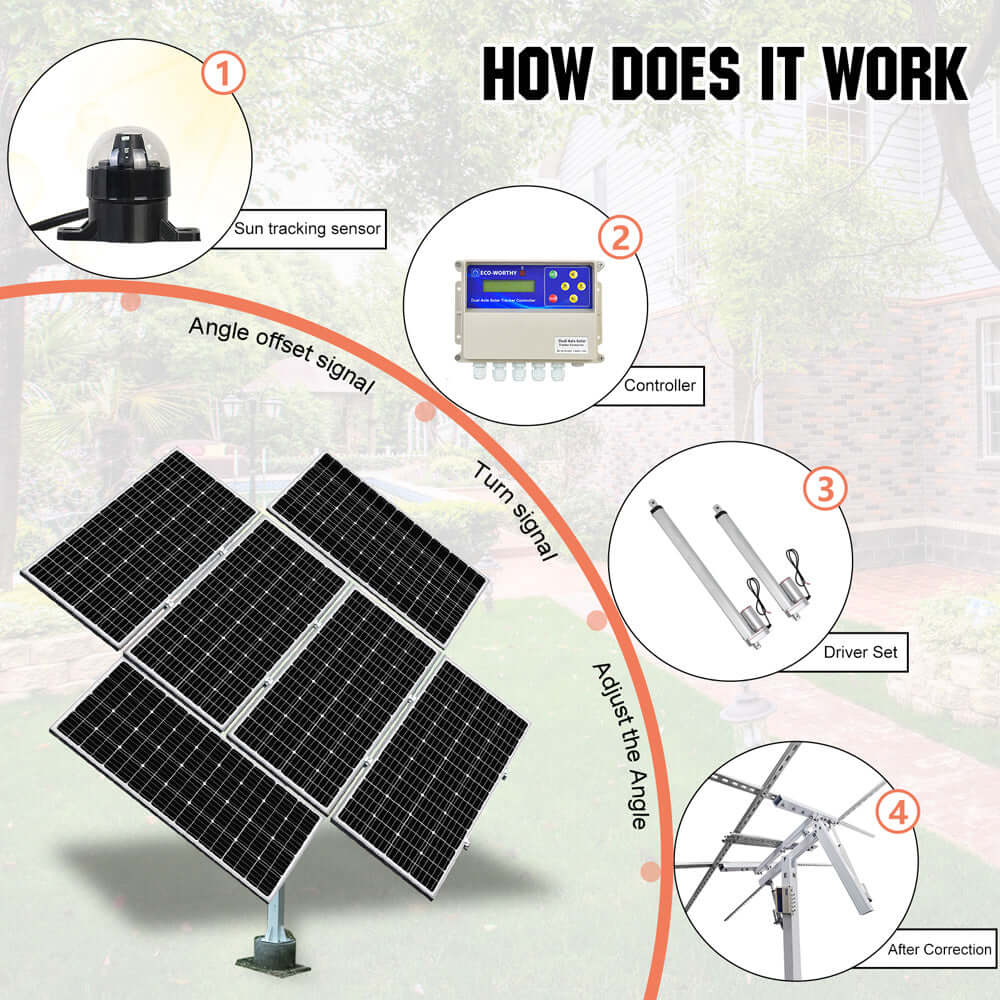
Credit: eco-worthy.com
Maintenance and cost considerations for solar panel tracking systems
Given their dynamic nature, solar panel tracking systems can demand more maintenance than their stationary counterparts. Including moving components means periodic check-ups, cleaning regimes, and lubrication become vital for their smooth operation and longevity. Recognizing and budgeting for these upkeep needs is essential when evaluating the comprehensive expense associated with such systems.
Regarding pricing, tracking systems tend to carry a heftier price tag than fixed ones. This cost discrepancy stems from the sophisticated components and technology underpinning them. Yet, it’s crucial to view this in the larger picture. While the upfront costs might seem steep, these systems’ augmented energy output can lead to appreciable reductions in electricity expenses over the long run. As a result, the initial outlay can be recouped over the system’s lifetime, making it a worthy investment for many keen on maximizing their renewable energy harvest.
To sum up
Harnessing the sun’s full potential is now achievable with solar panels that dynamically track its path. These sun-seeking panels amplify energy efficiency by continuously adjusting to optimal sunlight angles. The resultant uptick in energy yield bolsters renewable energy adoption and slashes electricity bills. Leveraging the innovations in photovoltaic technology, tracking solar systems stands as a beacon for sustainable energy solutions. Dive deeper into this realm of green technology and discover how such advances are revolutionizing our approach to harnessing solar power. With the promise of a cleaner, more sustainable future, it’s high time to embrace the prowess of sun-tracking panels and redefine energy consumption patterns.
